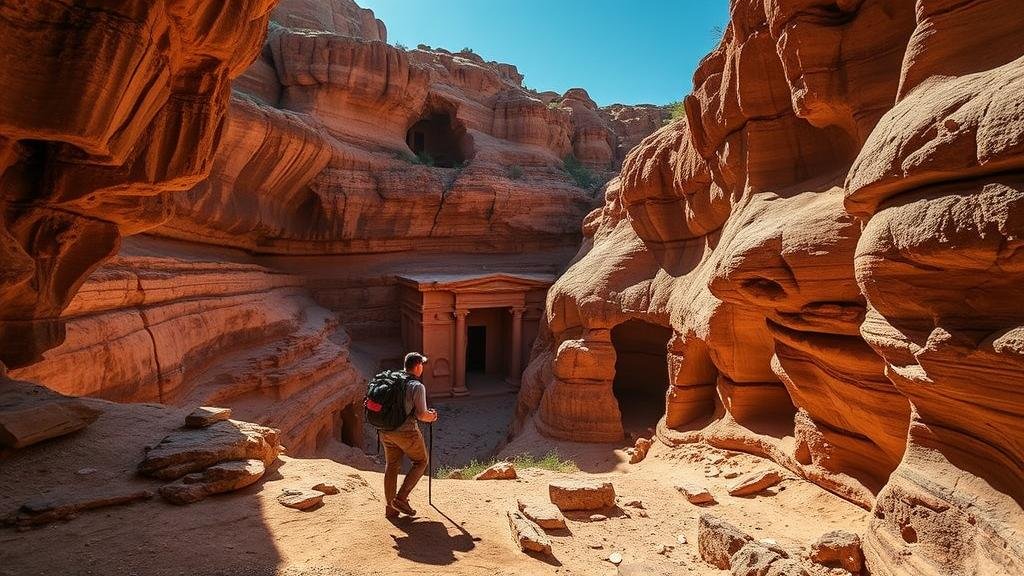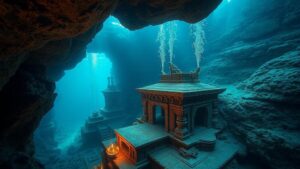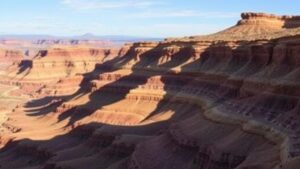Venturing into canyons said to house ancient cave-dwelling cultures.
Venturing into Canyons of Ancient Cave-Dwelling Cultures
The allure of ancient cultures nestled within the rugged walls of canyons has long captivated explorers, historians, and adventurers alike. These natural formations house remnants of societies that thrived thousands of years ago, often leaving behind intricate dwellings, advanced art, and insights into their complex lives. This article delves into the significance of these canyons, notable locations, and what modern adventurers can expect when venturing into these remarkable sites.
The Significance of Canyons in Human History
Canyons have served as more than just geological formations; they are historical treasure troves that reveal the interactions between ancient cultures and their environments. Examples such as the Grand Canyon in Arizona or the more remote Cedar Mesa in Utah showcase Native American cultures, particularly the Ancestral Puebloans, known for their unique cliff dwellings and distinct pottery.
According to the Bureau of Land Management, sites like these provide invaluable insights into ancient agricultural practices, social structures, and the spiritual lives of their inhabitants. Archaeological evidence suggests that the Ancestral Puebloans occupied these canyons from around 100 A.D. to 1300 A.D., demonstrating their longstanding relationship with the land.
Notable Canyon Locations
Several canyons across the United States host remnants of ancient civilizations. Here are a few notable examples:
- Chaco Canyon, New Mexico: Home to a complex of sophisticated stone buildings and ceremonial sites, this UNESCO World Heritage site was a major center of Ancestral Puebloan culture from 900 A.D. to 1150 A.D.
- Canyon de Chelly, Arizona: Featuring remarkable cliff dwellings, this canyon served as a refuge for the Navajo people and is also rich in archaeological resources from the Ancestral Puebloans.
- Bear’s Ears National Monument, Utah: This area contains thousands of archaeological sites, including burial sites and rock art, representing several ancient cultures over millennia.
What to Expect When Visiting
Visiting these canyons provides not just a glimpse into history but also opportunities for adventure. Travelers can expect a combination of hiking, educational tours, and the chance to witness breathtaking landscapes. Heres a breakdown of what to consider:
- Preparation: Hikers should be aware of their physical limitations and carry sufficient water and food. Many canyons may require permits for access.
- Guided Tours: Engaging with local archaeologists or guides can offer deeper insights into the historical significance and cultural context of the sites.
- Respect for the Sites: Many of these locations are sacred to Native American populations. Visitors must respect cultural heritage and follow all guidelines set by managing bodies.
Modern Applications and Ethical Exploration
The exploration of these ancient sites goes beyond mere tourism; it also plays a significant role in modern archaeology and conservation efforts. Researchers utilize advanced technologies, such as LiDAR (Light Detection and Ranging), to uncover hidden structures without causing damage to the site. For example, in 2018, aerial surveys in the Chaco region revealed new insights about the layout and extent of ancient road systems.
Also, ethical exploration encourages collaboration with indigenous communities to ensure that the cultural narratives are preserved and told accurately. As awareness grows around cultural sensitivity, travelers are increasingly encouraged to engage with native populations, learn from their histories, and support local economies.
Actionable Takeaways
Venturing into canyons housing ancient cave-dwelling cultures combines adventure with education and conservation. Here are some actionable takeaways:
- Research before you go: Learn about the specific culture associated with the area you are visiting.
- Take a guided tour: This enhances your understanding and appreciation of ancient cultures.
- Practice Leave No Trace principles: This ensures that these sites remain preserved for future generations.
- Engage with local communities: Support their efforts in preserving cultural heritage and learn from their traditions.
To wrap up, exploring the canyons said to house ancient cave-dwelling cultures is an enriching experience that offers a unique window into the past. By respecting these sites and understanding their significance, visitors can ensure that these treasures are preserved for future generations to enjoy and learn from.



